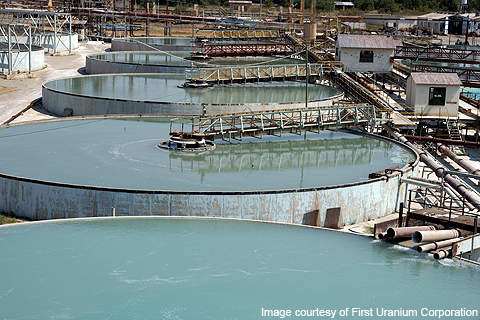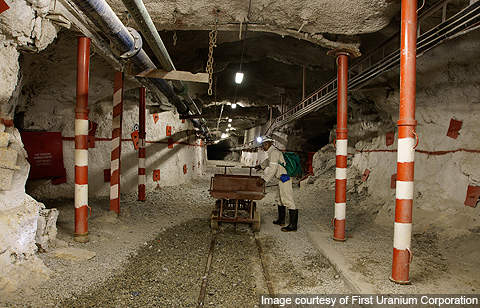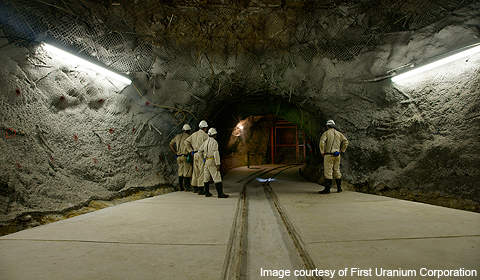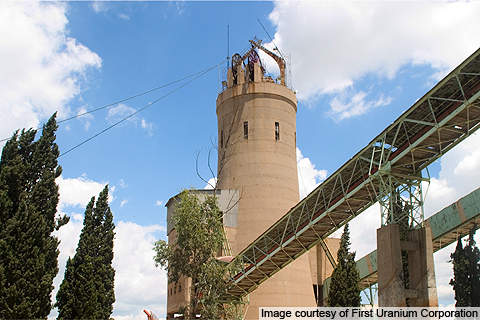Buffelsfontein gold mine (BGM) is located in South Africa, about 160km south-west of Johannesburg. Owned by Simmer & Jack Mines, the mine was formed through the consolidation of two former mines; Hartebeestfontein Mine, which currently represents the north division of BGM, and Buffelsfontein Mine, which represents the south division of BGM. The two mines have been operating for more than 50 years. Buffelsfontein Gold Mines Limited, which includes both the Hartebeesfontein and the Buffelsfontein mines, was acquired by Simmer & Jack Mines in October 2005, for R70m.
The mine is an underground operation and comprises gold and uranium resources. By 2014, it is expected that the mine will produce 318,000oz per annum.
An accident at the mine on 4 May 2010 led to the closure of the Number Five shaft. During a routine inspection in the shaft on level 27, the ground caved in, killing three miners. The shaft was recently reopened after a closure following a seismic event in March 2005. The shaft will remain closed pending further investigation into the incident.
Reserves
The mine’s proven and probable reserves are estimated to be 5.7 million ounces of gold and 27.32 million tons of uranium graded at 6.12g/t and 0.24lb/t respectively.
Measured and indicated resources within the mine include 11.02 million ounces of gold and 35.45 million tons of uranium graded at 10.67g/t and 0.44lb/t respectively. Inferred resources are estimated at 7.5 million ounces of gold graded at 11.36g/t.
Geology
The mine lies within the Klerksdorp gold field of the world famous Witwatersrand Basin. The late Archean-aged Witwatersrand basin is a gold district that consists of an inter-bedded sequence of arenaceous and argillaceous sediments.
The 6km thick sequence moves laterally up to 300km north-east / south-west and 100km north-west / south-east on the Kaapvaal Cratonne. The west, south and the eastern section of the basin is overlain by 4km of volcanic and sedimentary rocks belonging to the Archaean, Proterozoic and Mesozoic period.
Gold is found within a less-than-2m-thick laterally large quartz pebble conglomerate horizons or reefs. The Vaal Reef is a laterally extensive, rich conglomerate that dominates the mine.
The Vaal reef includes successive quartzite packages and oligomictic conglomerates concentrated on a series of non-conformities. The reef is divided into eight different geozones. A number of unique facies with distinct grade characteristics have been identified. The facies are well mineralised, less than 50m in thickness and contain crystalline and nodular pyrite, uraninite, gold and carbonaceous material at the bottom of the conglomerate layer.
The structural geology of the Hartebeestfontein Mine that forms the mine’s north division is characterised by a 20° average strike and dip. Due to fault displacements, the Vaal Reef is between 800m and 2,500m deep. The faults have been associated with dykes. The north division shares its boundary with the south division of the mine. The south division is geologically complex. It is characterised by between 800m and 1,000m fault displacements and a 25° dip towards the south-east. The central zone of the mining area has a triplicated reef, caused due to the impact of a complex thrust fault.
Mining and processing
Mining at Buffelsfontein gold mine is carried out using the conventional breast mining method with scraper winch cleaning. Extracted ore is loaded into hoppers through ore passes. It is then transported to the shaft by locomotive in haulages for hoisting to the surface. Six shafts excluding the Number Five shaft are in operation currently to extract the ore.
Ore processing includes semi autogenous grinding (SAG), thickening, cyanide leaching, carbon-in-pulp (CIP) and carbon processing before final recovery of gold. The site operates a CIP plant that has 170,000tpm capacity. To retreat rock dumps at the surface, a mini float project was commissioned in June 2009. The project has resulted in an increase of 5% in tonnage milled from surface and 2% in gold recovery.








